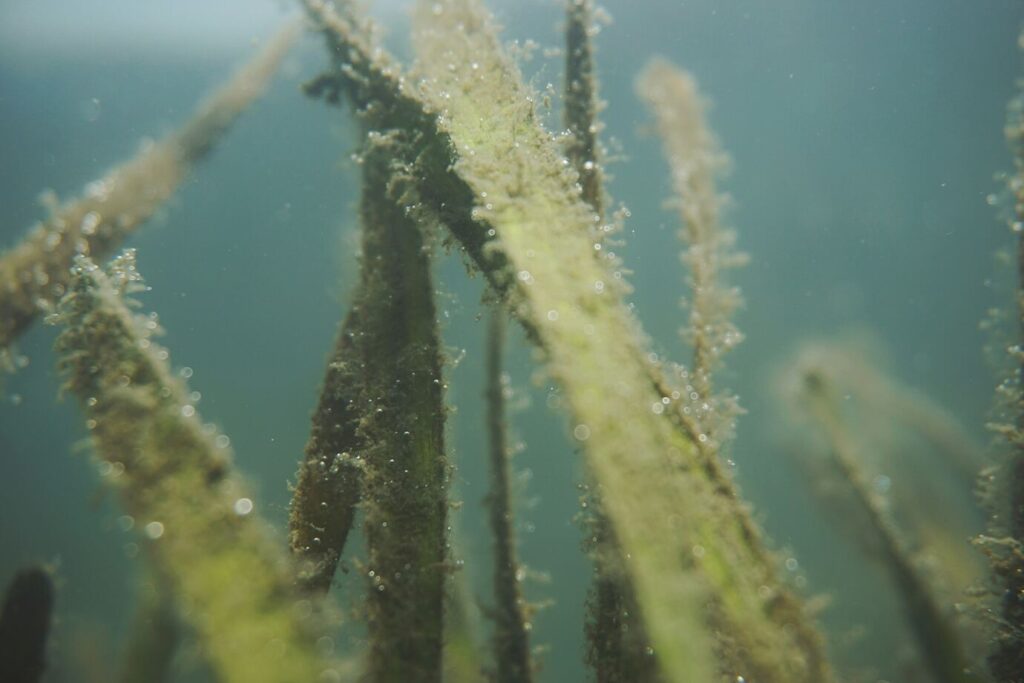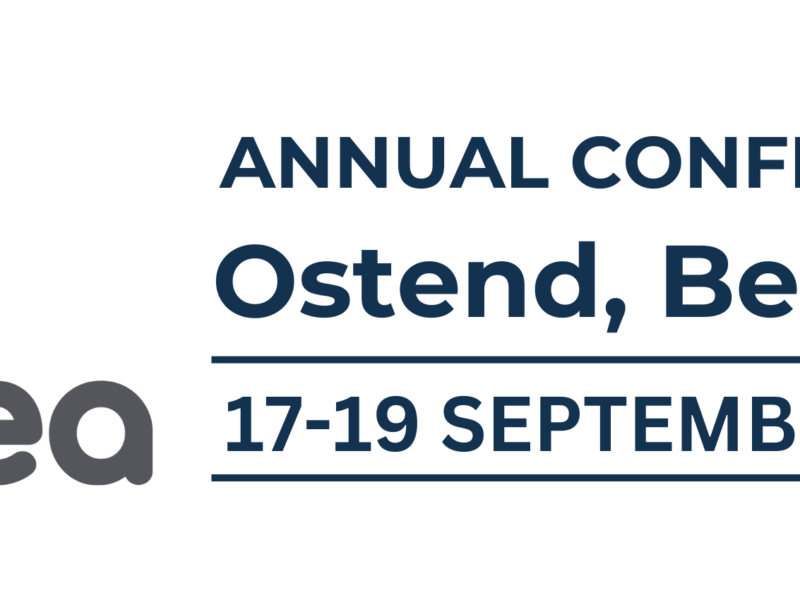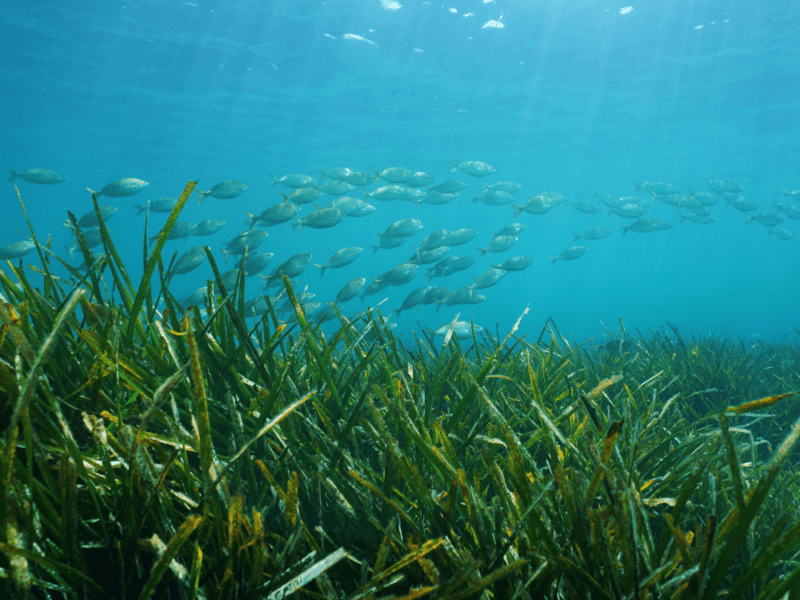
This is How PHAROS Project Protects Fragile Marine Ecosystems
This is How PHAROS Project Protects Fragile Marine Ecosystems https://pharosproject.eu/wp-content/uploads/2025/09/the-tampa-bay-estuary-program-QX0gQnaIp-4-unsplash-2-1024x683.jpg 1024 683 PHAROS Project PHAROS Project https://pharosproject.eu/wp-content/uploads/2025/09/the-tampa-bay-estuary-program-QX0gQnaIp-4-unsplash-2-1024x683.jpgDuring the Mission Communication Meeting held on 3 September 2025, the PHAROS project took centre stage with an insightful presentation by project manager Pablo Reche García. Pablo outlined PHAROS’s role in combating rapid degradation of marine ecosystems, tackling ocean pollution, and addressing unsustainable exploitation of marine resources. He also shed light on the upcoming Citizen Engagement activities planned across various demos and replication Living Labs.
Restoring marine ecosystems, eliminating pollution and fostering a sustainable blue economy are among the European Union’s most ambitious objectives under its Ocean Mission. At the heart of these efforts stands PHAROS, a Horizon Europe–funded initiative that spans from September 2024 through August 2029. Led by the Canary Islands Ocean Platform (PLOCAN) and involving 24 European partners, PHAROS aims to deliver nature-based solutions for ecosystem restoration across the Atlantic and Arctic sea basins.
The PHAROS Consortium and Its Mission
PHAROS brings together a diverse consortium, from research institutes such as Deltares and CSIC, to universities including ULPGC, to technology innovators like BLUEOASIS, as well as other stakeholders dedicated to marine conservation. Financed under Grant Agreement No 101157936 of the HORIZON-MISS-2023-OCEAN-01 programme, the project directly supports the EU Ocean Mission’s goals to:
- Restore marine ecosystems through innovative nature-based solutions (NBS),
- Combat ocean pollution by deploying technologies such as Integrated Multi-Trophic Aquaculture (IMTA) and artificial reefs, and
- Foster a sustainable blue economy via carbon-neutral, circular economic models for ocean industries.
Key Objectives
PHAROS has set three overarching objectives:
- Implement NBS to repair damaged ecosystems and promote biodiversity.
- Deploy solutions, notably IMTA systems and artificial reefs, to reduce pollutant loads.
- Develop circular economic models that achieve carbon neutrality in marine industries.
Methodology and Work Packages
To achieve these goals, PHAROS is structured into seven interlinked work packages:
- Methodology Development
Establishes project-wide frameworks and baseline data-collection methods for all demonstration sites. - Stakeholder Engagement
Builds Living Labs that co-create solutions alongside local communities and key actors. - Demo Implementation
Executes four in-situ demonstrations across the Atlantic-Arctic basin. - Digital Twin & MPA Platform
Constructs high-fidelity digital-twins and expands Marine Protected Area networks for monitoring. - Replication & Exploitation
Designs strategies for scaling successful solutions across additional sites. - Coordination & Management
Oversees administration, risk management and ensures seamless collaboration among partners. - Dissemination & Communication
Promotes project results to target audiences, maximising impact and uptake.
The Four Demonstrations
- Gran Canaria: Integrated Multi-Trophic Aquaculture (IMTA)
Combining fish farming with macroalgae, abalone and sea cucumbers around aquaculture cages, alongside artificial reefs, to absorb excess nutrients and enhance biodiversity. Trial period: November 2026–February 2027 (two-year duration). - Gran Canaria Marine Forests & Artificial Reefs
Deploys macroalgae forests on 2D and 3D artificial reefs-on the seabed, mid-water and mooring blocks-to create habitat complexity, reduce nutrients via macroalgae uptake and sequester CO₂ to mitigate acidification. - Ireland: Salmon Farming & Macroalgae Integration
Co-locates salmon pens with polyculture macroalgae species (e.g., kelp) to improve water quality, absorb nutrient waste, sequester carbon and foster new marine habitats. - Iceland: Invasive Pink Salmon Reduction
Utilises real-time environmental DNA (eDNA) monitoring to detect, track and control invasive pink salmon in rivers critical to Atlantic salmon populations. Filters and analyses water samples in situ, transmitting data instantly to researchers.
Living Labs and Stakeholder Engagement
PHAROS Living Labs are open-innovation ecosystems that place citizens and end-users at the core of co-creation. Building on the European Network of Living Labs (ENoLL) definition, each Living Lab integrates research and innovation directly within communities. Four principal stakeholder groups are engaged:
- Citizen Science, facilitated by the MINKA platform for biodiversity data collection and local engagement.
- MPA Managers, adapting the Blueprint Platform to support effective decision-making for Marine Protected Areas.
- Blue Schools, connecting educational communities with hands-on, marine-focused learning to instigate long-term behavioural change.
- Fisher Guardians, collaborating with professional fishers to adopt best practices for waste management, tagging lost gear and recycling end-of-life equipment.
- Litter Entrepreneurs, holding webinars and hackathons that empower citizens and businesses to design micro-enterprises and awareness campaigns targeting marine litter reduction.
Mark Your Calendar
On 25 September 2025 at 11:00 AM CET, PHAROS will host its first online webinar. This opening session sets the stage for the series, addressing critical questions: Where is the ocean economy today, and where must it go? In the face of climate impacts, pollution, and fragmented governance, this webinar provides a strategic overview of the forces shaping ocean health and blue economic activity.
Expected Impacts
By 2029, PHAROS aims to deliver:
- Strengthened implementation of the EU Biodiversity Strategy through large-scale habitat restoration.
- Enhanced cooperation across Atlantic-Arctic regions via community-driven Living Labs.
- Four fully operational demonstration sites deploying scalable NBS to combat climate change impacts.
- Five replication sites equipped with roadmaps and business models for nature-based solutions.
- Support for EU Green Deal objectives by nurturing a sustainable, circular blue economy.
PHAROS leads an example in how collaborative innovation, grounded in science, community engagement and cutting-edge technology, can restore our oceans and secure their future. Explore further at www.pharosproject.eu and join the movement to rejuvenate our marine environments.
In addition to PHAROS, several other initiatives were brought into focus:
EU-India Ideathon
Kinchit Bihani extended an invitation to participants to join the EU-India-TTC Working Group 2 Ideathon, calling for collaborative action to effect positive change for ocean conservation. Participants were encouraged to share the initiative widely, supported by a comprehensive Communication Toolkit accessible via SharePoint. Interested stakeholders were directed to learn more and express their interest through the official website. Correspondence relating to the initiative is handled through the email address eu-india@servicefacility.eu.
Declaration on Wetland Protection (DaWetRest)
Yan introduced the compelling Declaration on the Protection of Salt Marsh Habitats, Coastal Lagoons, and Sapropelic Mud Resources, with particular focus on the challenges presented by climate change. Originating from a workshop held in Turkey, Yan noted the declaration’s current endorsement by nine institutions and underscored its aim to restore and safeguard the vulnerable wetland and floodplain ecosystems within the Black Sea basin. The declaration is set to be formally publicised in September to galvanise support and action from authorities. Attendees were invited to add further signatures, with coordination managed through consortium partners and documents shared during the meeting. Signed copies can be submitted via email to designated contacts.
BlueActionBANOS
Frances Klatt announced the launch of the BlueActionBANOS project on 1 September 2025. The initiative aligns with other Mission projects across European sea basins to enhance marine ecosystem protection via community-led actions. The project will offer cascade funding rounds aimed at supporting local environmental efforts, with the first call expected by year-end or early the following year. BlueActionBANOS emphasises collaboration with sister projects and plans to maintain active communication with the community, sharing progress and opportunities through regular updates.
SUNDANSE Mission Highlights
Oriane Georges shared updates from SUNDANSE, a project focused on sediment research along the Danube River. The recent summer campaign took place aboard the RExDone, the largest freshwater research vessel in the region, visiting major capitals including those in Bulgaria, Serbia, Hungary, Slovakia, Austria, and Romania. Public workshops engaged local communities extensively. Oriane welcomed assistance in widening the project’s reach by boosting social media engagement and encouraged the sharing of press releases.
Restore4life Podcast Launch
Continuing her update, Oriane announced the impending launch of the Restore4life podcast series, dedicated to wetland topics. Six episodes are scheduled for release over the coming weeks, with recording ongoing for the final episodes. The project is actively seeking wetland experts to participate as guest speakers, with contact details provided for those interested in contributing.
BlueMissionMed Upcoming Events
Susanna Albertini outlined a suite of forthcoming activities under BlueMissionMed, including:
- An online Academy for Ports event on 17 September 2025, targeting tourism and port sector stakeholders, featuring innovative solutions and stakeholder discussions.
- A Cross-fertilisation webinar on 19 September aiming to foster knowledge exchange between the Mediterranean and Black Sea regions.
- The Forum Mondial de la Mer, to be held in Bizerte, Tunisia, on 12–13 September, co-organised with La Saison Bleue.
- The Society4Med Award (second edition), focusing on sport, leisure, and blue education initiatives, with submissions open until 30 September. Winners are to be announced at the Ecomondo 2025 event in Rimini.
Elisa Conti further highlighted the mission’s presence at Ecomondo, where BlueMissionMed will host high-level panels on regional cooperation, funding opportunities, and policy discussions, alongside a pavilion showcasing project pitches and collaborative sessions.
SoS2LearnDB Project Kick-off
Verena Höhn announced the launch of SoS2LearnDB on 16 September 2025. This project supports community-driven actions within the Danube and Black Sea basins, with upcoming cascade funding rounds planned to facilitate innovation and implementation.
Digital Twin Workshop (TerraDT)
Also presented by Verena on behalf of TerraDT was an upcoming hybrid workshop on Digital Twin solutions for sea ice, scheduled for 27–28 October 2025 in Tallinn, Estonia, with virtual participation options. The event aims to bring together experts in cryosphere modelling and digital twin technologies, exploring applications for enhanced navigation safety and climate adaptation strategies. Registration details and contact information for enquiries were shared.
FERRO Open Call
Finally, Tallent Dadi introduced the FERRO project, which seeks to promote sustainable lake restoration through nutrient recycling and tackling algal blooms, contributing to a circular phosphorus economy. The project, coordinated by the Helmholtz Centre for Environmental Research, has launched an open call on 1 September 2025. It offers up to €100,000 per applicant across three slots, with a webinar scheduled for 11 September to present the initiative and answer queries. Eligibility clarifications included university participation conditions and guidance for applicants.
Additional notes from the meeting included reminders about the PHAROS webinar series “Meet the Oceanpreneur” and provided key contact details related to various projects. Relevant documents and URLs were shared during the session for ease of follow-up and networking within the Mission community.
Readers interested in participating in these initiatives or learning more are encouraged to visit the respective project websites and connections provided within this featured summary. Together, these efforts showcase the vibrant, collaborative ecosystem advancing Europe’s Mission to Restore Our Ocean and Waters by 2030.
- PHAROS “Meet the Oceanpreneur” webinar: Sep 25, 2025 11:00 CET – register at pharosproject.eu/webinars/meet-the-oceanpreneur-webinars/
- Techirghiol Declaration: documents shared in chat (Page_to_sign_RO-ENG.docx, Declaration Techirghiol.docx); email signed PDFs to edward.bratfanof@ddni.ro or jan.bahr@steinbeis-europa.de
- SUNDANSE article: boost LinkedIn post at linkedin.com/feed/update/urn:li:activity:7364929411067830272/
- Hackathon4Ports: bluemissionmed.eu/dont-miss-the-bluemissionmed-hackathon4ports/
- EU-India contact: eu-india@servicefacility.eu
- EMODnet Vision 2035 webinar: register via Zoom link shared by Angeliki Karampourouni (angeliki.karampourouni@emodnet.eu)
- Cascade funding queries: mip-ocean-finance@milieu.be; general communications: mip-communication@technopolis-group.com
- Posted In:
- PHAROS News

